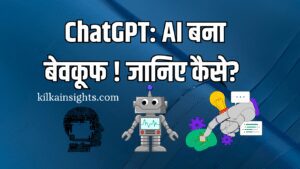Unlocking the Secret Language of the Brain with Stable Diffusion AI
Don’t fret, dear readers…
Your concerns about Artificial Intelligence immaturity in a real-life adaptation of George Orwell’s 1984 are merely figments of your imagination.
According to Science Magazine, a recent article titled, “AI recreates what people see by reading their brain scans” reveals groundbreaking progress in the field.
In the quest to decode the human brain and understand how it translates visual stimuli into mental images, artificial intelligence (AI) has been steadily improving its ability to mimic this complex process.
A new study, set to be presented at an upcoming computer vision conference, showcases AI’s ability to interpret brain scans and reproduce impressively realistic renditions of images a person has viewed.
As this technology advances, researchers anticipate numerous applications, ranging from investigating how various animal species perceive the world to potentially recording human dreams and facilitating communication for individuals with paralysis.
Numerous labs have utilized AI to interpret brain scans and recreate images a subject has recently seen, such as human faces and landscape photos.
This study marks the first application of an AI algorithm called Stable Diffusion, developed by a German group and publicly released in 2022. Stable Diffusion is akin to other text-to-image “generative” AIs like DALL-E 2 and Midjourney, which generate new images from text prompts after training on billions of images with accompanying text descriptions.
For this research, a Japanese team enhanced the standard Stable Diffusion system by associating additional text descriptions with thousands of photos and correlating them to brain patterns elicited when participants viewed those photos in brain scan studies.
This novel approach, which combines textual and visual information to “decipher the brain,” sets Stable Diffusion apart from previous AI algorithms that required extensive training on large datasets, says Ariel Goldstein, a cognitive neuroscientist at Princeton University who was not involved in the study.
The AI algorithm leverages information collected from different brain regions involved in image perception, such as the occipital and temporal lobes, explains Yu Takagi, a systems neuroscientist at Osaka University who collaborated on the experiment.
Using functional magnetic resonance imaging (fMRI) brain scans, which monitor changes in blood flow to active brain areas, the system interpreted the information to reconstruct the images.
Popular Posts
- Trending:Whatsapp पार्ट-टाइम नौकरियों में ठगी; Zerodha सीईओ ने खोली पोल।by Harendra Singh Keelka
- Trending:कमर दर्द के कारण, जॉंच, उपचारby Harendra Singh Keelka
- Trending:Debunking the Myth: Running and Arthritisby Harendra Singh Keelka
- Trending:How Yoga, Meditation and Sleep Boost Well-Beingby Harendra Singh Keelka
- Trending:आलस्य से मुक्ति: सफलता की कुंजीby Harendra Singh Keelka
- Trending:मुलहठी: खांसी कफ निकालने का चमत्कारिक उपायby Harendra Singh Keelka











